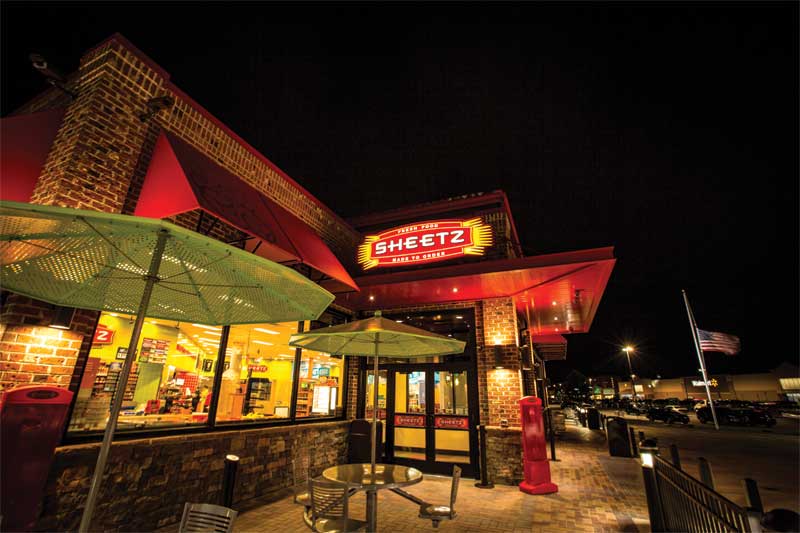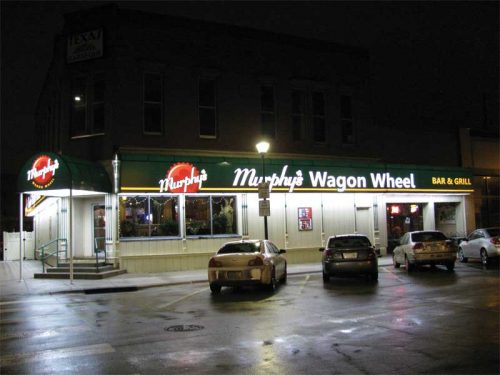By J. Bryan Vincent

Today, LED retrofits are in full swing in the sign industry as they are a cost-effective solution to existing light fixtures.
Just seven years ago, T12 was starting out in the light-emitting diode (LED) retrofit market. At the time, channel letter retrofits dominated the industry; however, the idea that a C$3 T12 could be retrofitted cost-effectively to an LED was a long shot and was exclusively reserved for high-maintenance locations. Regardless, the market was so big and ubiquitous that LED manufacturers and sign companies alike strove to come up with a solution. Early stage innovations included everything from rollout carpet products to various substrates with light bars that needed to be field assembled. Manufacturers were constantly experimenting through this nascent market.
Switching to a reliable power supply

With LEDs, the beams are more directional, which allows maximum sign illumination with a minimum number of light sources.
Today, LED retrofits are in full swing as they are a cost-effective solution to existing light fixtures. The transition toward installing and using retrofits started with two basic approaches.
- A patented stick was developed, which could fit into existing sockets, allowing installers to follow traditional relamping processes. This line of direct in-socket products initiated a solution that has now become the standard for retrofitting sign cabinets—from T12 lamps to LED. The product allows the LED-carrier substrate to fit directly into a T12 socket. Also, the power supply is separate. This means a highly reliable commercial power source is used compared to the low dependability of ‘self-ballasted’ LED drivers. Therefore, the product can be field cut and any range of LED strings/modules can be placed onto the substrate.
- The product was entirely assembled in North America, which allowed a range of colours, lamp lengths, outputs, and beam patterns to cover any sign cabinet size that could be delivered in a timely manner.
As with any innovation, these ideas were simple, yet effective, and set a new market opportunity into motion in the illuminated sign space. More importantly, retrofits allowed sign installation companies to add value to their services by upgrading customers’ existing fluorescent fixtures to LEDs. Additionally, the low costs of these sticks combined with the rising expenses for maintaining and servicing signs guaranteed a faster return on investment (ROI) for businesses that upgraded to LEDs. The returns were easy to measure, further lowering the risk to business owners.
Driving ROI to customers
When converting from T12 to LED, there are three key costs that drive the customer’s ROI.
Energy Savings
LEDs typically lower the overall energy consumption by 50 to 75 per cent. Single-sided cabinets offer the most savings, especially if a retrofit is used. Lamps provide 360-degree illumination; therefore, much of the light never gets translated to lux (used to measure the amount of light output in a given area—one lux is equal to one lumen/m2 [one lumen per 11 sf) on the sign face. With LEDs, the beams are more directional, which allows maximum sign illumination with a minimum number of light sources. The number of hours a sign is on, as well as its utility rate, will impact the overall energy savings.
Maintenance
One of the biggest drivers of ROI is maintenance. Relamping can be an expensive process—much of the cost is not in the lamps itself, but in the time and labour required to reach the site and perform the job. Since LEDs last much longer than high-output (HO) T12 fluorescent lamps, end-users experience a substantial reduction in service calls and ongoing operational costs.
Upfront costs
Upfront costs of materials and installation are a big component of ROI for sign companies.
These expenses can impact returns; therefore, it is important to include them in the calculation. One way to help the customer save money is to install the retrofit when servicing their lamps. One is already attending to a service call in this case, so the upfront costs only include materials and the additional time required to install the retrofit versus relamping.





